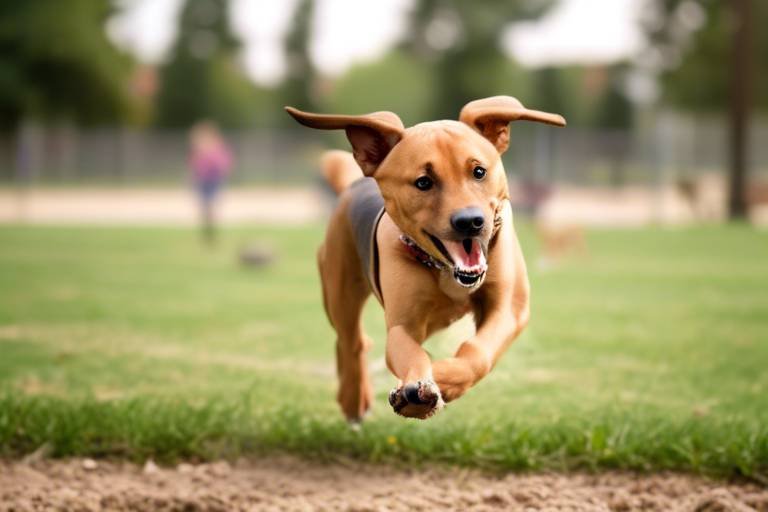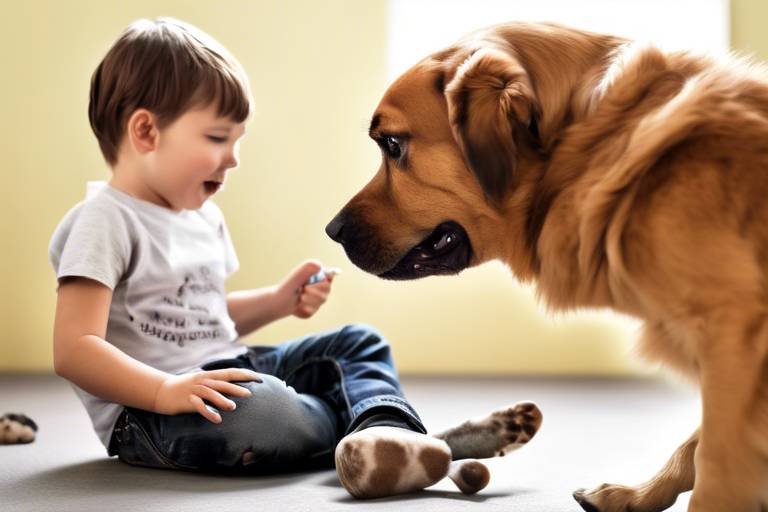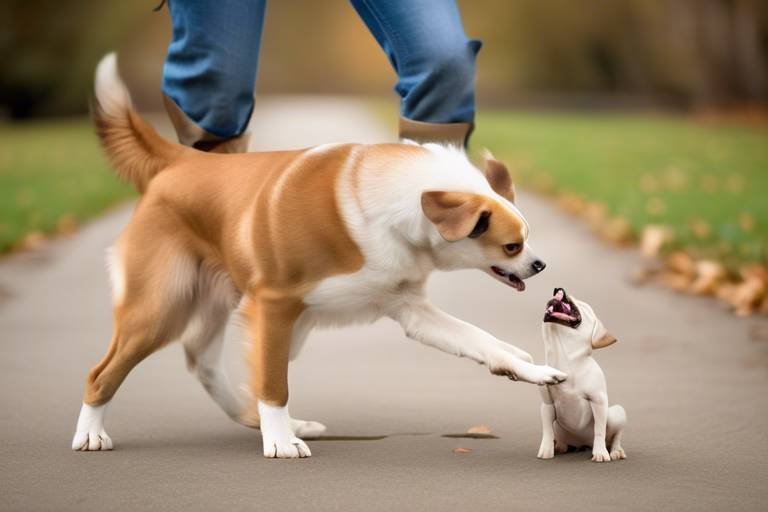The Importance of Desensitization in Training
Desensitization is more than just a buzzword in training circles; it’s a transformative process that can change the way both animals and humans interact with their environments. Imagine a dog that used to cower at the sound of thunder, now happily playing in the rain, or a public speaker who once froze at the thought of an audience, now confidently delivering speeches. This is the power of desensitization!
At its core, desensitization is a psychological technique aimed at reducing sensitivity to specific stimuli. Whether it’s loud noises, unfamiliar environments, or high-pressure situations, desensitization helps individuals confront their fears head-on. It’s like gradually turning down the volume on a loud radio until the sound becomes comfortable. But why is this process so crucial in training?
First and foremost, desensitization enhances performance. In both animals and humans, exposure to stressors in a controlled manner can lead to improved responses when faced with real-world challenges. For example, athletes who practice under simulated pressure can perform better during actual competitions. Similarly, pets that are desensitized to various stimuli—like other animals or loud noises—are less likely to react negatively, making them more reliable companions.
Moreover, desensitization reduces anxiety. Think about a time you felt nervous before a big event. Now, imagine if you had practiced in a similar environment beforehand. You’d likely feel more at ease, right? This is precisely what desensitization achieves. It prepares both humans and animals for potentially anxiety-inducing situations, allowing them to adapt more easily and respond appropriately.
Incorporating desensitization techniques into training can also foster greater adaptability. In a world that is constantly changing, the ability to adjust to new experiences is invaluable. By exposing individuals to a variety of scenarios in a safe and controlled manner, they learn to embrace change rather than fear it. This adaptability can lead to enhanced problem-solving skills and greater overall resilience.
In summary, desensitization is not just a technique; it’s a vital component of effective training. By reducing sensitivity to stimuli, enhancing performance, alleviating anxiety, and promoting adaptability, desensitization paves the way for success in various training contexts. Whether you’re working with a nervous pet or preparing for a big presentation, understanding and applying desensitization techniques can make all the difference.
- What is desensitization? Desensitization is a psychological process that reduces sensitivity to specific stimuli, helping individuals manage fear and anxiety.
- How does desensitization work? It involves gradual exposure to the feared stimulus in a controlled environment, allowing individuals to build tolerance and reduce anxiety over time.
- Can desensitization be applied to both animals and humans? Absolutely! Desensitization techniques are effective for training pets, as well as for helping individuals overcome performance anxiety in various situations.
- What are some common techniques used in desensitization? Techniques include gradual exposure, positive reinforcement, and creating a safe environment for practice.

Understanding Desensitization
Desensitization is a fascinating psychological process that plays a pivotal role in reducing sensitivity to specific stimuli. Imagine walking into a crowded room for the first time; the noise, the chatter, and the overwhelming number of people can be daunting. But over time, as you frequent such environments, your mind and body begin to adapt. This is desensitization in action! It’s all about gradually exposing oneself to stimuli that might initially provoke anxiety or discomfort, allowing individuals—both humans and animals—to become more comfortable and less reactive.
The mechanisms behind desensitization are deeply rooted in behavioral psychology. At its core, desensitization involves repeated exposure to a stimulus in a controlled manner, which diminishes the emotional response over time. For instance, if a dog is afraid of loud noises, such as thunder or fireworks, gradually introducing it to those sounds at a lower volume can help it become accustomed to the noise, reducing fear and anxiety. This approach can be applied in various training methodologies across different fields, including therapy, education, and animal training.
In the context of training, desensitization is not just about facing fears; it’s about enhancing performance and adaptability. Whether it’s a performer learning to cope with stage fright or an athlete preparing for a high-stakes competition, desensitization techniques can help individuals manage their responses to pressure. The process often involves a series of steps, which can be tailored to the individual’s needs. For example, one might start with visualization techniques, then progress to practicing in front of a small, supportive audience before moving to larger groups.
Moreover, the relevance of desensitization extends beyond just overcoming fears. It enhances overall resilience, allowing individuals to navigate various situations with greater ease. In a world that constantly throws new challenges our way, being desensitized to stressors can mean the difference between thriving and merely surviving. The ability to face fears and remain calm in the face of pressure is a skill that can be cultivated through intentional practice.
In summary, understanding desensitization involves recognizing its definition, mechanisms, and importance in training methodologies. It’s a transformative process that empowers individuals to confront their fears, improve their performance, and adapt to changing environments. Whether you’re training a pet or preparing for a public speaking event, desensitization is a powerful tool that can lead to remarkable improvements.

Benefits of Desensitization in Training
Desensitization is not just a fancy term thrown around in psychology; it’s a powerful tool that can transform how both animals and humans respond to various stimuli. Imagine a world where anxiety doesn’t hold you back from achieving your goals. That’s the magic of desensitization! By gradually exposing individuals to the very things that cause them stress or fear, we can help them build resilience and confidence. This process leads to a myriad of benefits that can significantly enhance performance in a variety of settings.
One of the most significant advantages of desensitization is the reduction of anxiety. Whether it’s a dog terrified of thunderstorms or a public speaker dreading the spotlight, desensitization techniques can help alleviate those fears. By systematically introducing the feared stimuli in a controlled manner, individuals learn to associate these triggers with calmness instead of panic. This transition is not just beneficial; it’s life-changing!
Moreover, desensitization fosters improved performance. In high-pressure situations, such as competitive sports or crucial presentations, anxiety can hinder performance. Think of it like a race car driver who panics at the sound of the starting gun. Through desensitization, they can train themselves to remain focused and composed, leading to better outcomes. This is crucial because the ability to perform under pressure is often what separates the good from the great.
Additionally, desensitization enhances adaptability. In today’s fast-paced world, adaptability is key. Whether it’s a dog learning to navigate a busy street or an employee adjusting to a new work environment, desensitization can help individuals become more flexible and resilient. By exposing them to various scenarios, they develop the skills to handle unexpected changes with grace and confidence.
Let’s break down some of the specific benefits of desensitization:
- Enhanced Emotional Regulation: Individuals learn to manage their emotional responses better, leading to a more stable state of mind.
- Increased Confidence: As fears diminish, self-esteem grows, encouraging individuals to take on new challenges.
- Better Social Interactions: Reduced anxiety leads to improved relationships, as individuals feel more comfortable in social settings.
In summary, the benefits of desensitization in training are numerous and profound. From reducing anxiety to improving performance and adaptability, desensitization equips both animals and humans with the tools they need to thrive in various situations. The journey may require patience and persistence, but the rewards are undeniably worth it!
Q: How long does the desensitization process take?
A: The duration varies depending on the individual and the specific fears being addressed. Some may see results in a few sessions, while others may require more time.
Q: Can desensitization be done at home?
A: Yes! Many desensitization techniques can be practiced at home, especially with animals. However, it’s often beneficial to consult a professional for guidance.
Q: Are there any risks associated with desensitization?
A: If not done correctly, desensitization can lead to increased anxiety. It’s essential to proceed gradually and ensure that the individual feels safe throughout the process.
Q: Is desensitization effective for everyone?
A: While many individuals benefit from desensitization, responses can vary based on personal experiences and personality traits.
Application in Animal Training
Desensitization is a transformative tool in the realm of animal training. It serves as a bridge that connects animals with their environments, allowing them to thrive in situations that might otherwise induce fear or anxiety. Imagine a dog that quivers at the sound of thunder; through desensitization, that same dog can learn to remain calm and composed, transforming a moment of panic into a peaceful experience. This process is not only vital for pets but also for working animals, such as service dogs, who must remain focused and relaxed amidst distractions.
In practice, desensitization involves gradually exposing animals to stimuli that trigger their anxiety. For instance, a horse that is skittish around loud noises can be introduced to those sounds at a low volume, gradually increasing the intensity as the horse becomes more comfortable. This method allows the animal to learn that the noise is not a threat, fostering a sense of security. It's akin to teaching a child to swim by first letting them play in shallow water before moving to the deep end. The gradual exposure is key to building confidence.
Moreover, desensitization techniques can vary widely depending on the animal and the specific fears they exhibit. Here are some common applications:
- Socialization: Exposing puppies to various people, animals, and environments helps them grow into well-adjusted adults.
- Sound Sensitivity: Using recordings of thunder or fireworks at a low volume can help pets acclimate to these sounds.
- Handling and Grooming: Gradual exposure to touch, such as brushing or nail trimming, can help animals accept these necessary routines without fear.
The beauty of desensitization lies in its adaptability. Trainers can tailor their approaches based on individual animal needs, ensuring a personalized experience. For example, a timid cat might require a much different strategy compared to an exuberant Labrador. The key is to observe the animal's reactions and adjust the exposure accordingly, making the process as smooth and stress-free as possible.
Another important aspect of desensitization is the incorporation of positive reinforcement. This technique involves rewarding the animal for calm behavior during exposure to the anxiety-inducing stimulus. For instance, if a dog remains relaxed during a thunderstorm, offering treats or affection reinforces that behavior, making it more likely to be repeated. This combination of gradual exposure and positive reinforcement not only helps in reducing fear but also strengthens the bond between the animal and the trainer.
In summary, the application of desensitization in animal training is a powerful method that enhances an animal's ability to cope with various stimuli. By using gradual exposure and positive reinforcement, trainers can help animals overcome their fears, leading to improved behavior and a happier, more confident pet. This not only benefits the animals but also enriches the lives of their owners, creating harmonious relationships that thrive on trust and understanding.
Techniques for Animal Desensitization
When it comes to desensitizing animals, trainers have a toolbox full of techniques designed to help pets and working animals become more comfortable with various stimuli. The key to success lies in gradual exposure and positive reinforcement, creating a safe and supportive environment for the animal. One of the most effective methods is the gradual exposure technique, where the animal is slowly introduced to the feared stimulus in a controlled manner. For instance, if a dog is anxious about loud noises, a trainer might start by playing a recording of soft sounds, gradually increasing the volume over time as the dog becomes more comfortable.
Another essential technique is counter-conditioning. This involves changing the animal's emotional response to a stimulus by pairing it with something positive, like treats or playtime. Imagine a cat that is terrified of the vacuum cleaner. By giving the cat treats while the vacuum is running at a low setting, it learns to associate the once-feared noise with something enjoyable, thereby reducing its anxiety over time.
In addition to these methods, desensitization through play can also be quite effective. Engaging animals in play while exposing them to the feared object can create positive associations. For instance, if a horse is scared of a new saddle, incorporating playtime with the saddle nearby can help the horse feel more at ease. The idea is to make the experience enjoyable and non-threatening, allowing the animal to explore its environment without fear.
It's also important to note that consistency and patience are vital in these techniques. Animals, much like humans, need time to adapt to new experiences. Trainers should always monitor the animal's body language and behavior to ensure they are not overwhelmed. If an animal shows signs of distress, it's crucial to take a step back and allow more time for desensitization before continuing. This gradual approach helps build trust and confidence, ultimately leading to a more successful training outcome.
Finally, a structured training plan can be beneficial. This plan should outline specific goals, timelines, and techniques to be used during the desensitization process. By keeping track of progress, trainers can adjust their methods as needed, ensuring that each animal receives the tailored care it requires. Below is a simple table to illustrate a potential training plan:
| Week | Technique | Goal |
|---|---|---|
| 1 | Gradual Exposure | Introduce soft sounds |
| 2 | Counter-Conditioning | Pair sounds with treats |
| 3 | Playtime with Stimulus | Reduce fear of vacuum |
| 4 | Monitor Progress | Adjust techniques as needed |
By implementing these techniques, trainers can effectively desensitize animals to various stimuli, leading to improved behavior and a more harmonious relationship between the animal and its environment. Remember, the journey of desensitization is a marathon, not a sprint, and with patience and dedication, both trainers and animals can experience remarkable transformations.
Success Stories in Animal Training
Desensitization has proven to be a game-changer in the world of animal training, transforming fearful and anxious pets into confident companions. One remarkable success story involves a rescue dog named Max. Initially, Max was terrified of loud noises, particularly thunderstorms. His previous experiences had left him traumatized, making it nearly impossible for him to relax during storms. However, his dedicated trainer employed desensitization techniques that gradually exposed him to recorded thunder sounds at a low volume. Over time, Max learned that these noises were harmless, allowing him to feel safe and comfortable during real storms. This journey not only improved Max's quality of life but also strengthened the bond between him and his owner.
Another inspiring example comes from a horse named Bella, who had developed a severe fear of the vet. Every time the vet arrived, Bella would panic, making it challenging for her owner to ensure her health. The trainer introduced a method of desensitization by allowing Bella to interact with the vet in a non-threatening environment. They started with short visits where the vet simply offered treats and gentle pats, gradually introducing more invasive procedures over time. Bella’s transformation was astounding; she eventually learned to associate the vet with positive experiences rather than fear, making routine check-ups a breeze.
The effectiveness of desensitization is not limited to dogs and horses. In fact, it has been successfully applied to a variety of animals. For instance, a trainer working with exotic birds used desensitization techniques to help a parrot named Kiwi overcome his fear of human interaction. Initially, Kiwi would scream and hide at the sight of humans. The trainer began by simply sitting quietly in the same room, allowing Kiwi to observe without pressure. Over time, Kiwi became more comfortable, eventually allowing the trainer to offer treats and engage in gentle play. Today, Kiwi is a social butterfly, eagerly interacting with visitors and showcasing his vibrant personality.
These success stories highlight the immense potential of desensitization techniques in animal training. The beauty of these methods lies in their adaptability; they can be tailored to suit the unique needs of each animal, fostering a positive and trusting relationship between the animal and its trainer. The journey of desensitization is not just about overcoming fears; it’s about building confidence and enriching the lives of both animals and their owners.
In conclusion, the power of desensitization in animal training cannot be overstated. From rescue dogs to exotic birds, the stories of transformation serve as a testament to the effectiveness of these techniques. As trainers continue to embrace desensitization, we can expect to see even more remarkable progress in helping animals lead happier, more fulfilling lives.
- What is desensitization in animal training?
Desensitization is a process that helps animals become less sensitive to stimuli that typically cause fear or anxiety. It involves gradually exposing the animal to these stimuli in a controlled and positive manner.
- How long does desensitization take?
The duration of desensitization varies depending on the individual animal and the severity of its fears. Some animals may show improvement in a few sessions, while others may require weeks or even months of consistent training.
- Can desensitization be used for all animals?
Yes, desensitization techniques can be applied to a wide range of animals, including dogs, cats, horses, and even exotic pets. However, the approach may need to be tailored to fit the specific needs and temperament of each species.
Desensitization in Human Training
Desensitization in human training is a fascinating and powerful tool that can transform how individuals handle high-pressure situations. Whether it’s the fear of public speaking, performance anxiety in sports, or even the jitters before a job interview, desensitization techniques can help individuals face their fears head-on. Imagine standing in front of an audience, your heart racing and palms sweating. Now, picture yourself calm, collected, and ready to engage. This shift is not just a dream; it’s an achievable reality through effective desensitization strategies.
At its core, desensitization involves gradually exposing individuals to the source of their anxiety in a controlled and supportive environment. This process allows them to build confidence and reduce their sensitivity to the stimuli that once triggered fear. For example, a public speaker might start by practicing in front of a mirror, then progress to speaking in front of family and friends before finally addressing a larger audience. Each step serves as a building block, reinforcing their ability to manage anxiety.
In various fields, desensitization techniques can be tailored to fit specific needs. In sports, athletes often visualize their performance, imagining every move as they prepare for competition. This mental rehearsal helps reduce anxiety and enhances focus, leading to improved performance. Similarly, in the realm of public speaking, individuals can practice their speeches in front of small groups, gradually increasing the audience size as they become more comfortable.
Moreover, understanding the science behind desensitization can demystify the process. It’s not just about exposure; it’s about creating a positive association with the once-feared stimuli. Techniques such as cognitive behavioral therapy (CBT) can be instrumental in this regard. CBT encourages individuals to challenge negative thoughts and replace them with positive affirmations, which can significantly enhance their confidence levels.
However, it’s essential to recognize that desensitization is not a one-size-fits-all solution. Individual differences play a crucial role in how each person responds to these techniques. Factors such as personality traits, past experiences, and even the specific context of the anxiety can influence the effectiveness of desensitization. For instance, someone with a history of positive public speaking experiences may find it easier to adapt than someone who has faced negative experiences in the past.
In summary, desensitization in human training is a vital process that can lead to remarkable transformations. By gradually exposing individuals to their fears and employing supportive techniques, they can overcome anxiety and improve their performance in various situations. As we continue to explore the benefits of desensitization, it becomes clear that with the right approach, anyone can learn to face their fears and thrive.
- What is desensitization? Desensitization is a psychological process that reduces sensitivity to anxiety-inducing stimuli through gradual exposure.
- How does desensitization help in public speaking? It helps by allowing individuals to practice and become comfortable with the act of speaking in front of others, reducing anxiety over time.
- Can desensitization techniques be applied to other areas? Yes, techniques can be applied in various contexts, including sports, therapy, and everyday situations where anxiety may arise.
- Is desensitization effective for everyone? While many benefit from desensitization, individual responses can vary based on personal experiences and traits.

Challenges in Desensitization
Desensitization, while an incredibly effective technique, is not without its challenges. Many trainers and individuals embarking on the journey of desensitization quickly discover that the road can be bumpy. One of the primary hurdles is the individual differences in response. Just like how each person has unique fingerprints, their reactions to desensitization can vary significantly. Factors such as personality traits, prior experiences, and even the specific context of the training can influence how well someone responds to desensitization techniques.
For instance, some individuals may possess a naturally anxious disposition, making them more susceptible to feeling overwhelmed during the desensitization process. Others may have had negative experiences in the past that could trigger a fear response, complicating the training efforts. This variability means that what works for one person or animal may not work for another, requiring trainers to adopt a more personalized approach.
Another challenge lies in maintaining progress. Achieving desensitization is one thing, but keeping that progress over time is another. Imagine training a dog to be comfortable around loud noises. Initially, they may seem unfazed, but without consistent reinforcement, they could revert to their old fearful behaviors when faced with those stimuli again. This is where ongoing support and practice come into play. Regular exposure to the stimuli, coupled with positive reinforcement, is essential to ensure that the desensitization remains effective.
Additionally, the desensitization process can sometimes lead to frustration for both the trainer and the subject. It’s important to remember that progress may not always be linear. There might be days when it feels like two steps forward and one step back. Recognizing that setbacks are a normal part of the journey can help maintain motivation. Trainers should focus on small victories and celebrate progress, no matter how minor it may seem.
Furthermore, there are external factors that can hinder the desensitization process. For example, environmental changes, such as moving to a new home or changes in routine, can introduce new stressors that require revisiting desensitization techniques. Trainers and individuals must remain adaptable and ready to modify their strategies as needed. This flexibility is crucial for overcoming challenges and ensuring long-term success.
In summary, while desensitization is a powerful tool for improving performance and reducing anxiety, it comes with its own set of challenges. By understanding the individual differences in response, maintaining progress, and being adaptable to external changes, trainers can navigate these hurdles effectively. It’s a journey that requires patience, persistence, and a sprinkle of creativity, but the rewards are well worth the effort.
- What is desensitization? Desensitization is a psychological process designed to reduce sensitivity to stimuli, helping individuals or animals become more comfortable in various situations.
- How long does the desensitization process take? The duration varies based on the individual and the stimuli involved. It can take weeks to months to achieve significant results.
- Can desensitization be applied to both animals and humans? Yes, desensitization techniques are effective for both animals and humans in various contexts, including training, therapy, and performance enhancement.
Individual Differences in Response
When it comes to desensitization, one size definitely does not fit all. Just like how each snowflake is unique, individuals respond differently to desensitization techniques. This variability can be attributed to a multitude of factors, including personality traits, past experiences, and even biological differences. Imagine trying to teach a dog to walk calmly past a busy street. While some dogs may trot along with ease, others might freeze in fear or bark incessantly. This is where understanding individual differences becomes crucial in tailoring desensitization strategies.
For instance, consider two athletes preparing for a high-pressure competition. One athlete thrives under pressure, using the adrenaline to enhance performance, while the other may crumble, overwhelmed by anxiety. This difference can stem from their previous experiences with competition, their coping mechanisms, and even their inherent temperament. It’s essential to recognize that what works for one person may not work for another, making it vital to customize desensitization approaches.
Moreover, personality traits play a significant role in how individuals respond to desensitization. Research suggests that traits like neuroticism can lead to heightened sensitivity to stressors, while traits such as openness may facilitate a more adaptive response to new experiences. Understanding these traits can help trainers and coaches develop more effective desensitization programs tailored to individual needs. Here’s a brief overview of how different personality traits can influence desensitization:
| Personality Trait | Response to Desensitization |
|---|---|
| Neuroticism | Increased sensitivity to stressors, may require more gradual exposure. |
| Openness | More adaptable and willing to face new experiences, may respond well to varied stimuli. |
| Extraversion | Often more resilient in social situations, may benefit from group desensitization techniques. |
| Conscientiousness | May thrive on structured approaches, benefiting from clear plans and goals. |
In addition to personality traits, prior experiences can heavily influence how an individual responds to desensitization. Someone who has had positive experiences with a particular stimulus is likely to approach it with less fear compared to someone who has faced negative encounters. This is akin to how a child who has been encouraged to explore the world will likely be more adventurous than one who has been overly protected. Therefore, when implementing desensitization techniques, it’s essential to consider the individual’s history and tailor the approach accordingly.
Ultimately, understanding these individual differences not only enhances the effectiveness of desensitization but also fosters a more compassionate and supportive training environment. By recognizing that each person or animal has their unique journey, trainers can create personalized strategies that lead to lasting success. This approach not only helps in achieving the desired outcomes but also builds trust and confidence, essential elements for both human and animal training.
Maintaining Progress
Once you’ve achieved a level of desensitization, the journey doesn’t simply end there; it’s crucial to maintain that progress. Think of it like riding a bike: once you learn, you can’t just hop on after a long break and expect to be a pro without some practice! Maintaining desensitization requires consistent effort and a strategic approach. Here are some key considerations to keep in mind:
Firstly, it’s essential to establish a routine that reinforces the behaviors you want to maintain. Regular practice sessions, even if they are brief, can significantly help in cementing the progress made. Just like watering a plant, regular care ensures it continues to thrive. You might consider setting aside specific times each week dedicated to practicing the skills or behaviors you’ve worked hard to develop. This could be as simple as taking your dog for a walk in varying environments or practicing public speaking in front of a small group.
Another important aspect is to continually expose yourself or your animal to the stimuli that were once anxiety-inducing. This doesn’t mean overwhelming exposure, but rather controlled, gradual reintroduction to those elements. For instance, if a dog has been desensitized to loud noises, periodically playing recordings of those sounds at a low volume can help maintain their comfort level. It’s all about keeping the experience fresh and manageable.
Also, consider using positive reinforcement as a tool for maintaining progress. Rewarding yourself or your animal for successfully navigating situations that previously caused anxiety can reinforce the desired behavior. This could involve treats for pets or self-rewards for humans, such as a favorite snack or activity after a successful practice session. The connection between the positive experience and the previously anxiety-inducing situation is crucial for reinforcing confidence.
It’s also vital to keep track of your progress. Maintaining a journal or a log can help you identify patterns and recognize areas that may need more attention. For instance, if you notice that certain environments still trigger anxiety, you can adjust your approach accordingly. This reflection not only helps in adapting your strategies but also serves as a motivational tool, as you can visually see how far you’ve come.
Lastly, don’t hesitate to seek support. Whether it’s from a trainer, a coach, or a supportive friend, having someone to share your journey with can make a significant difference. They can provide encouragement, accountability, and even new strategies that you might not have considered. Remember, it’s perfectly okay to ask for help along the way!
- What is desensitization? Desensitization is a psychological process aimed at reducing sensitivity to stimuli, often used in training to help individuals become more comfortable in anxiety-inducing situations.
- How long does it take to see results from desensitization? The time frame can vary significantly based on the individual and the stimuli involved. Some may see results in a few sessions, while others might take weeks or months.
- Can desensitization be applied to both animals and humans? Absolutely! Desensitization techniques are effective for both animals, such as pets and working animals, and humans in various high-pressure situations.
- What should I do if I notice regression in progress? If you notice regression, it’s important to revisit the basics and possibly slow down the exposure. Reinforcing positive experiences and seeking guidance can also help.
Frequently Asked Questions
- What is desensitization?
Desensitization is a psychological process that reduces sensitivity to certain stimuli. It involves gradually exposing an individual or animal to a triggering stimulus in a controlled manner to help them become more comfortable and less reactive over time.
- How does desensitization benefit training?
Desensitization offers numerous benefits, including improved performance, reduced anxiety, and enhanced adaptability to various situations. By decreasing sensitivity to stressors, individuals can perform better in high-pressure environments, whether in sports, public speaking, or animal training.
- Can desensitization techniques be applied to animals?
Absolutely! Desensitization is widely used in animal training. Techniques like gradual exposure and positive reinforcement help pets and working animals become comfortable with different stimuli, such as loud noises or unfamiliar environments.
- What are some effective techniques for animal desensitization?
Some effective techniques include gradual exposure, where the animal is slowly introduced to the stimulus at a low intensity, and positive reinforcement, which rewards the animal for calm behavior during exposure. These methods help create a positive association with previously fear-inducing stimuli.
- How can desensitization help humans in high-pressure situations?
Desensitization can significantly reduce performance anxiety in humans, especially in situations like sports or public speaking. By repeatedly exposing individuals to these scenarios in a controlled way, they can build confidence and reduce their fear response.
- What challenges might arise during the desensitization process?
Challenges include individual differences in response to desensitization techniques and difficulties in maintaining progress after initial success. Factors like personality traits and past experiences can influence how well someone responds to desensitization.
- How can I maintain progress after desensitization?
To maintain progress, it's crucial to continue practicing desensitization techniques regularly. Setting realistic goals, seeking support from professionals, and gradually increasing exposure to stressors can help ensure long-term success.



















